There are quite a few traditions around India hold enough strength to amaze you. This curious tradition that goes on around in a small town in Maharashtra, would surely capture your imagination. The town is known as Jejuri and it is situated at about a 50km drive from Pune. I first heard the name Jejuri while sifting through the newspaper one day, where I found a small article on the curious tradition that goes on there.
Quite a few months passed by as I waited for the right opportunity to visit Jejuri. The window to photograph the event was very short and specific. Though regular and daily rituals are carried out at the abode of Lord Khandoba (Avātār of Shiva), there is something special about Somawati amavashyas (no moon day that falls on monday).
Finding this once-a-year opportunity in the month of July 2016, I took out my car and started a drive towards Jejuri from Pune. Before I come to the details about the event, I must begin by showing some photographs of the general landscape that was with me throughout.
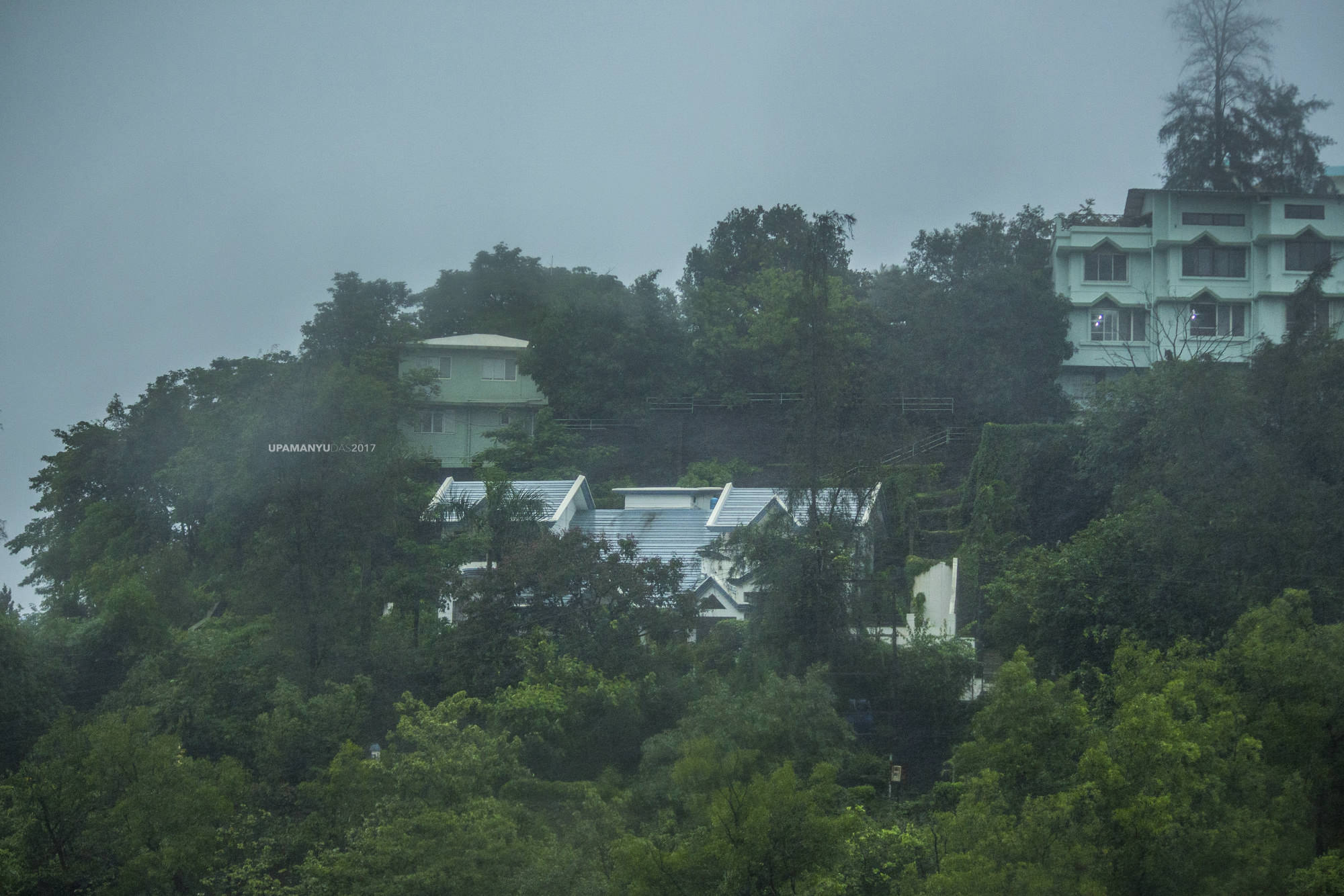
The absolute beauty of the Western Ghats, never cease to amaze me, and I couldn’t help myself but to stop for a few photographs.
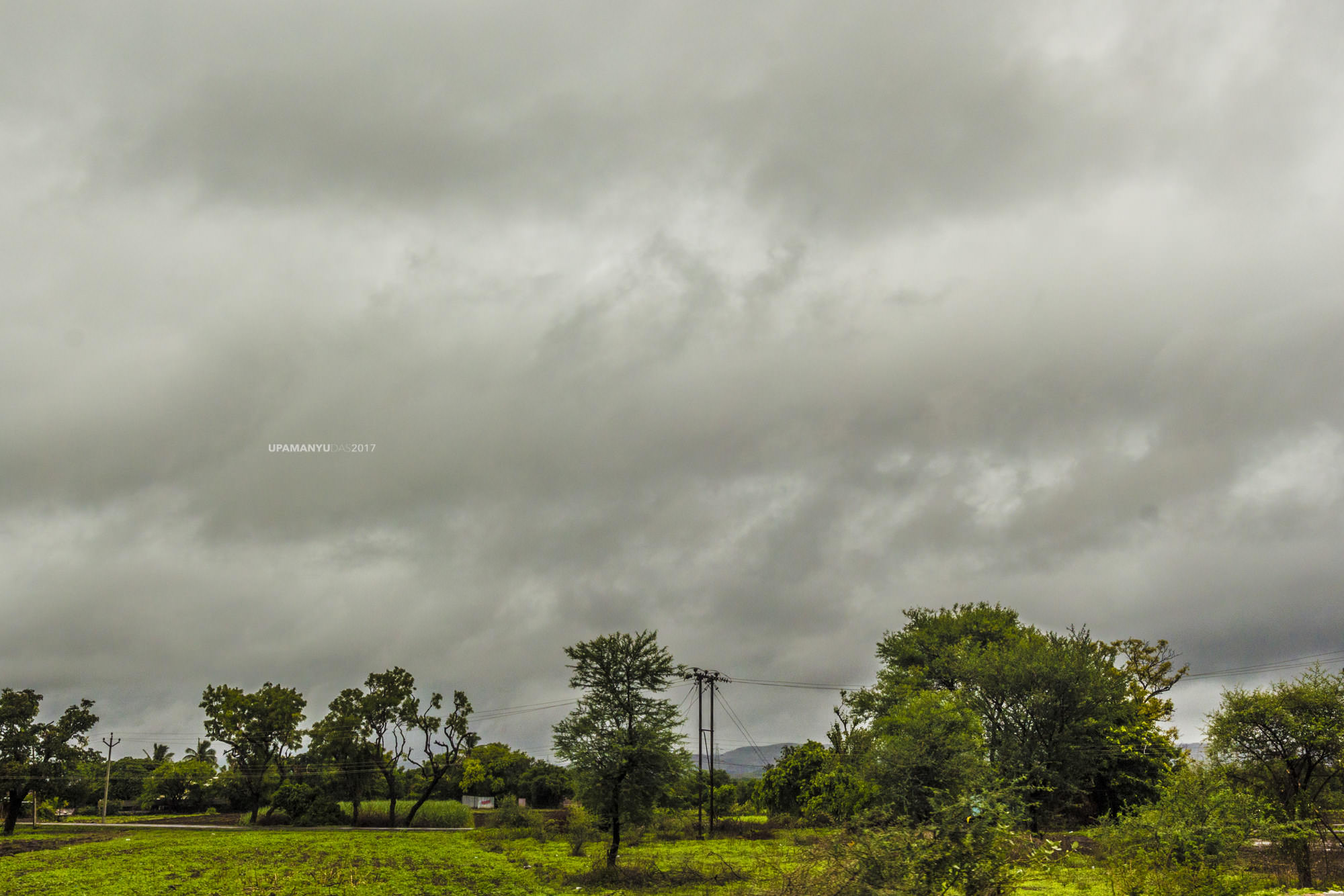
Also very intrinsic is the beauty of rural Maharashtra. Being child of Bengal, I’ve alsways grown up with the open fields and lush greenery around me. Even in my home at Mumbai, I was always surrounded my so much greenery. Reading about the droughts and famines in rural Maharashtra, I was always of the biased opinion that the scenery was not quite beautiful. It was only during this drive into the heart of Maharashtra, did I finally break out of my bias.
After a drive of almost an hour, I was finally able to park my car and start my journey into the temple. And from the very entrance, I could see signs of the event I was here to witness.
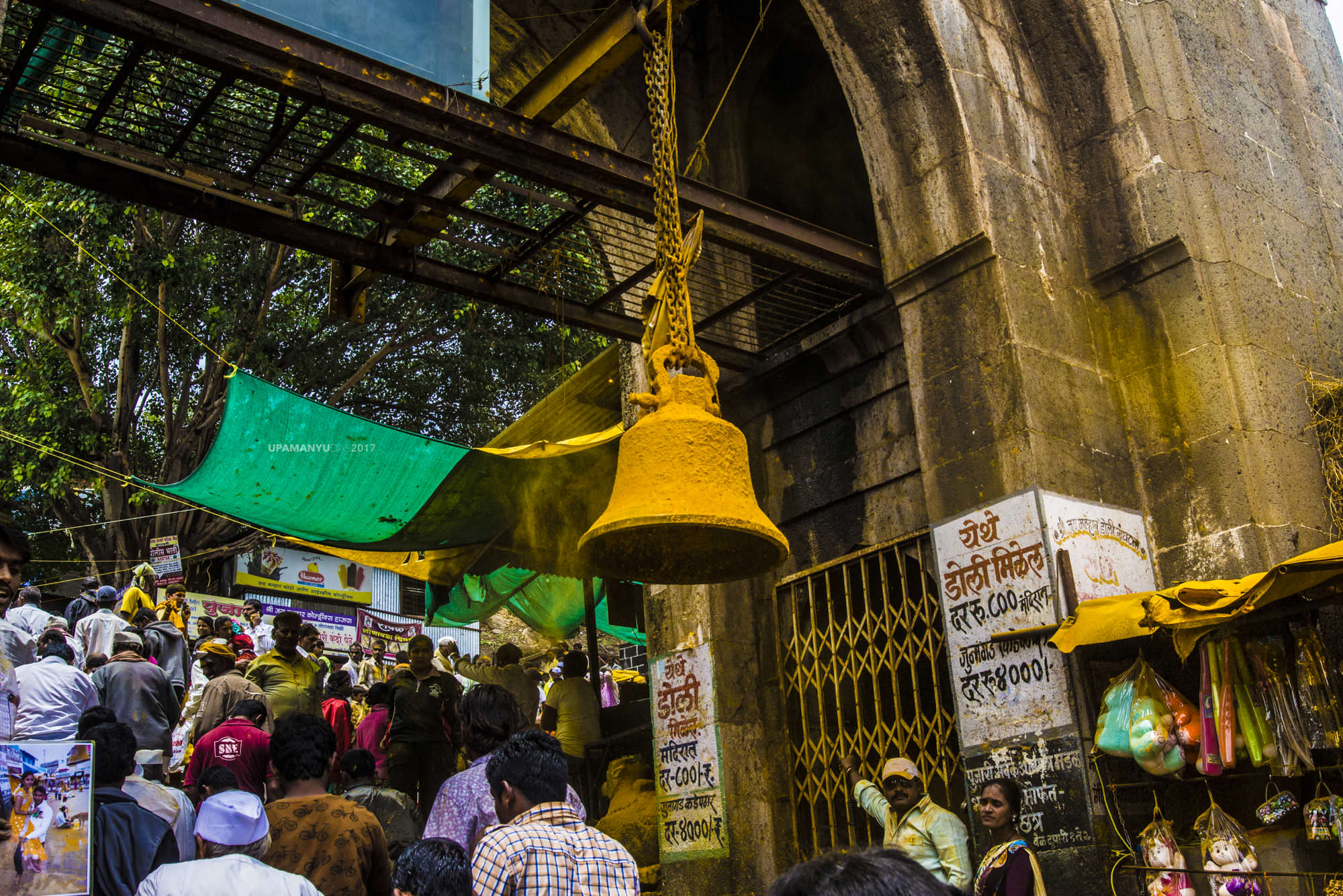
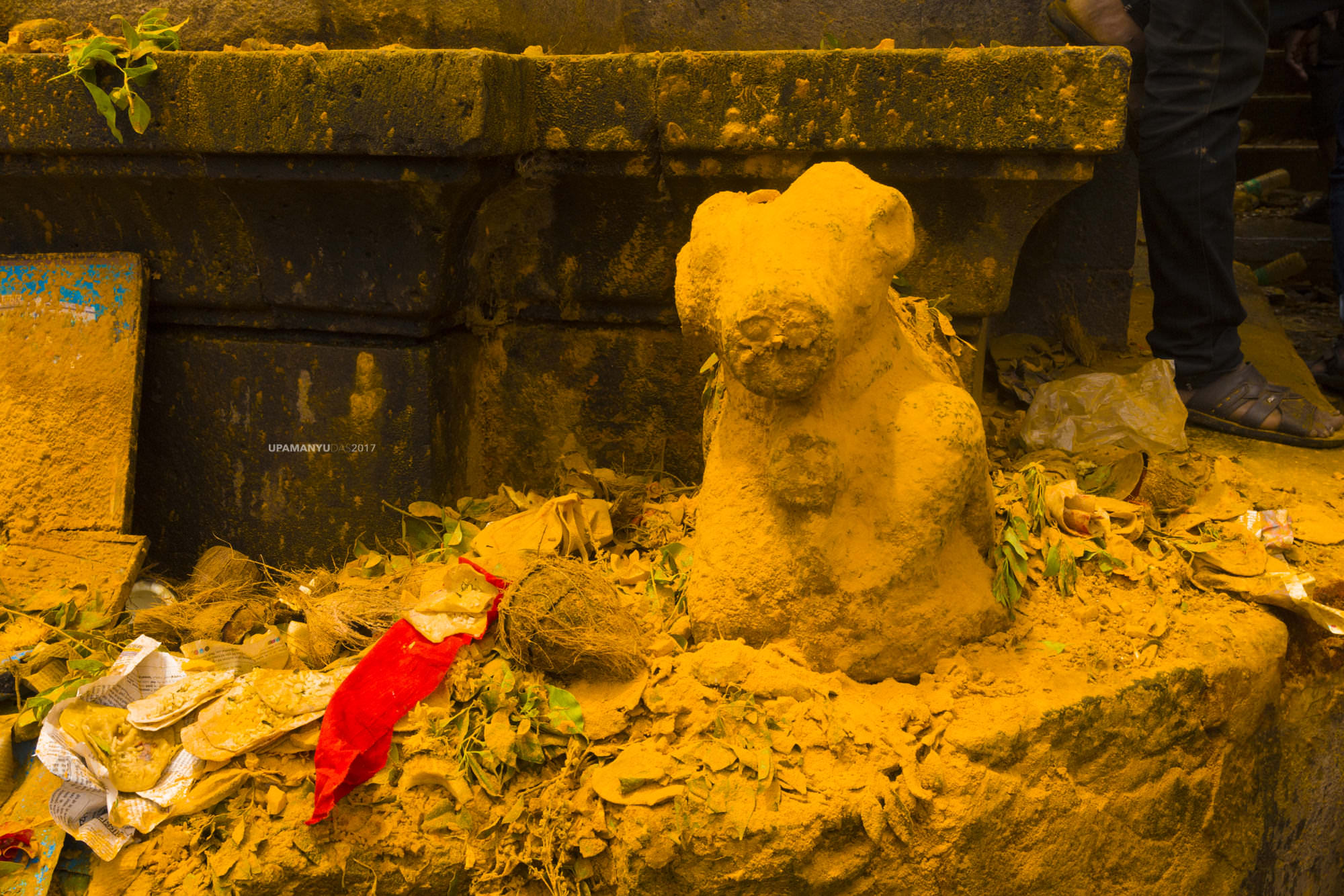
Sonyachi Jejuri - as the holy town Jejuri is called aptly by the native Maharashtrians, which means “The Golden Jejuri”, comes alive when one looks from the roof top of the Khandoba temple at the porch, at the stairs, at the roads, at the entire Jejuri city and at the people around it when they gather here in myriads during the sacred day of Somawati Amavashya (no moon day that falls on Monday) to pay their reverence to their family god Khandoba. And they do so by throwing around bhandara (turmeric powder) on each other. Almost making it a festival very similar to holi.
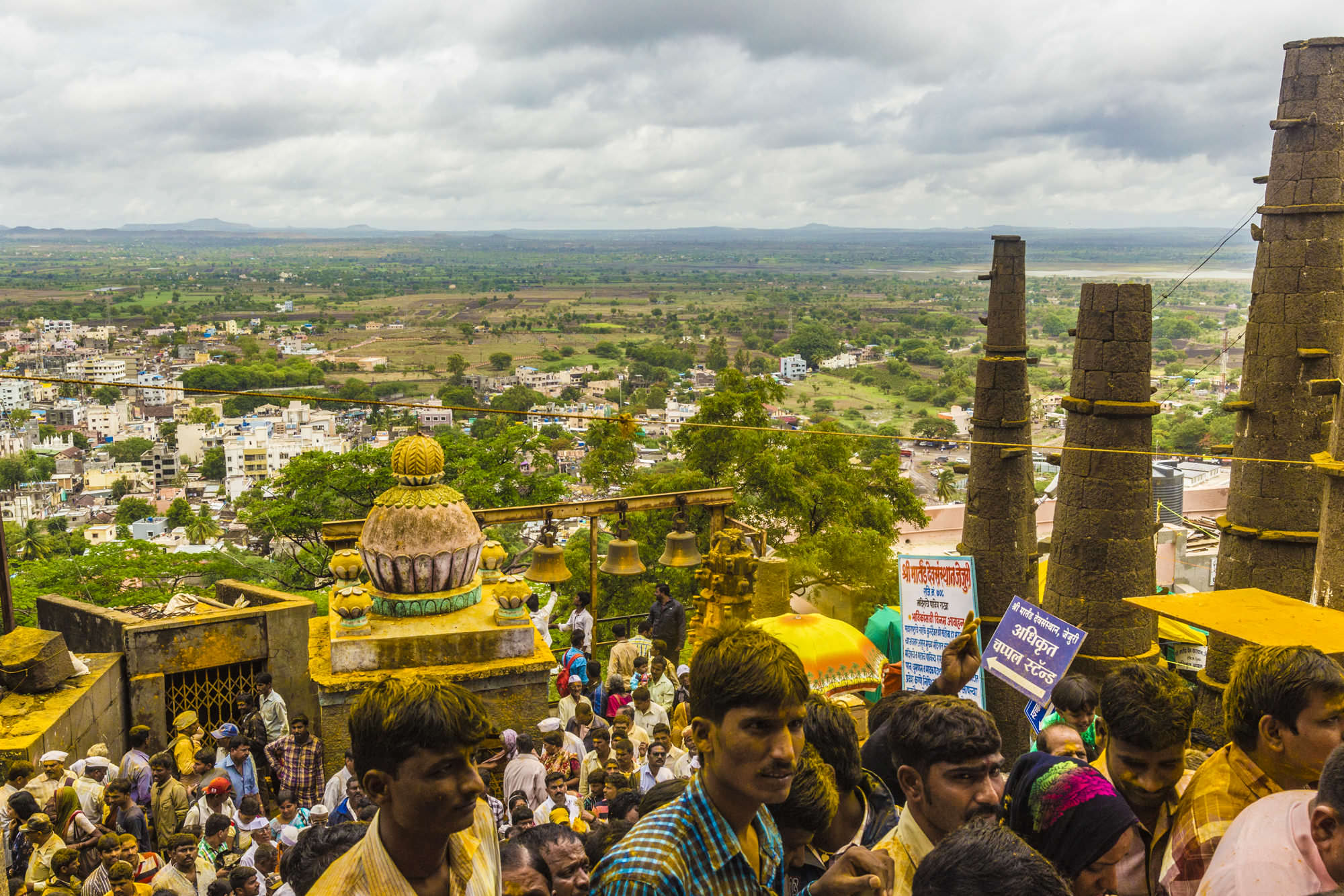
Lord Khandoba, is probably one of the most versatile and widely acknowledged god being worshipped across many regions, religions, casts and communities. He is the most popular Kul Devata (family god) among one of the oldest shepherd tribe “Dhangar” and the patron deity of Deshastha Brahmin. People from other communities like warriors, farming and herding castes too keep their high regards towards him. The cult of Khandoba has prominent linkages with Vaishnava and Jain traditions despite him being worshipped as Martanda Bhairava, a form of Lord Shiva.

In the temple of Jejuri, surprisingly both the deities of him and his wife Malsha is in the form of Lingas (one of Lord Shiva’s most known statue form) which are covered with decorated silver masks. A part of the Muslims too consider him as their god Mallu Khan and been seen offering goat flesh in the temple areas. This way people consider him as one of the rare non-vegetarian Indian god. Surya and Kartikeya Skanda are his other depictions too.
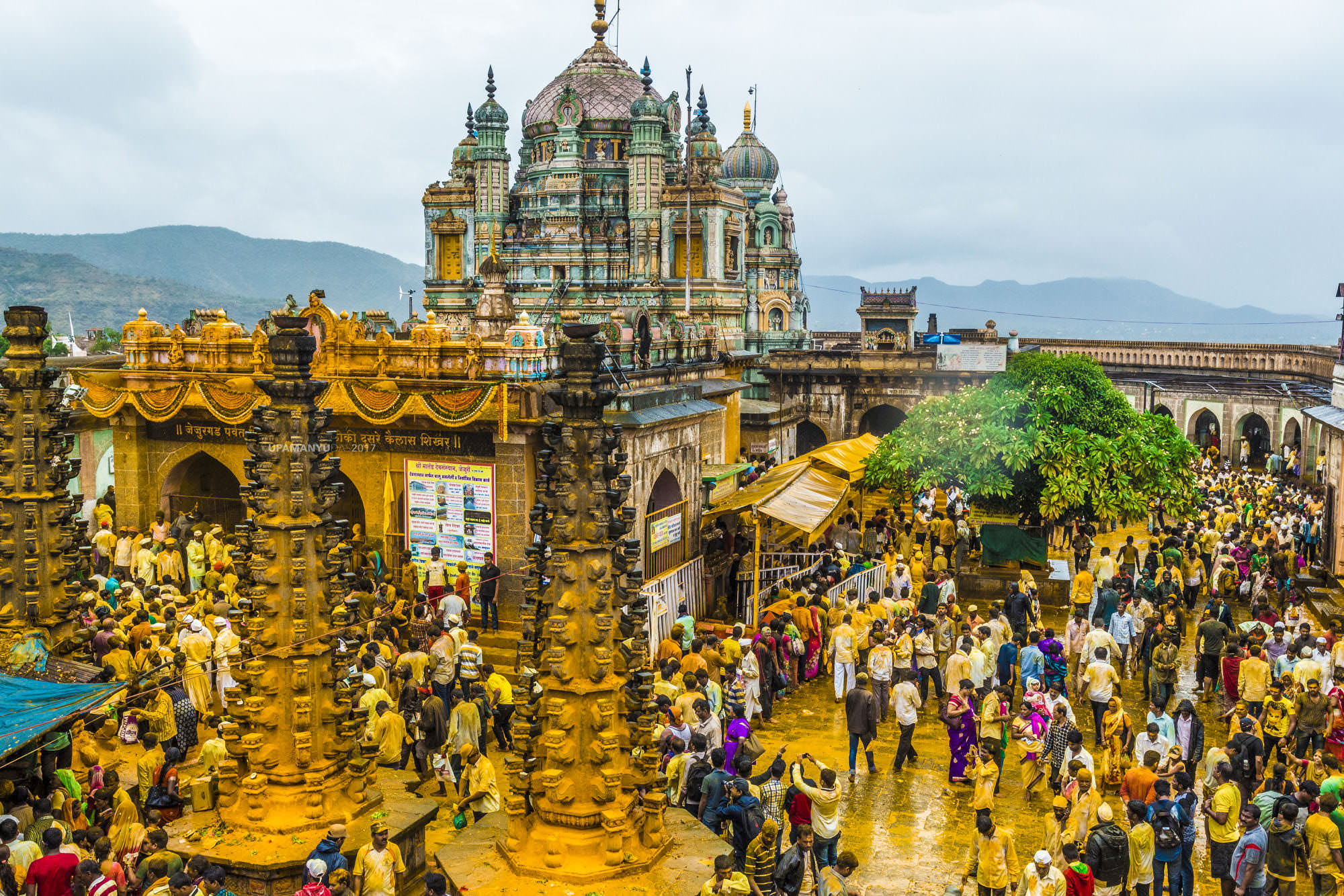
The offering of turmeric powder to paint the city golden yellow has its many reasons, logics and traditions. Popular belief is that the tradition came from the yore old great Indian tradition of applying turmeric to the bride and groom as an antiseptic agent to protect their immunities. And as the festival is to celebrate the wedding ritual of Lord Khandoba and his wife Malsha, that same ritual has manifested here.
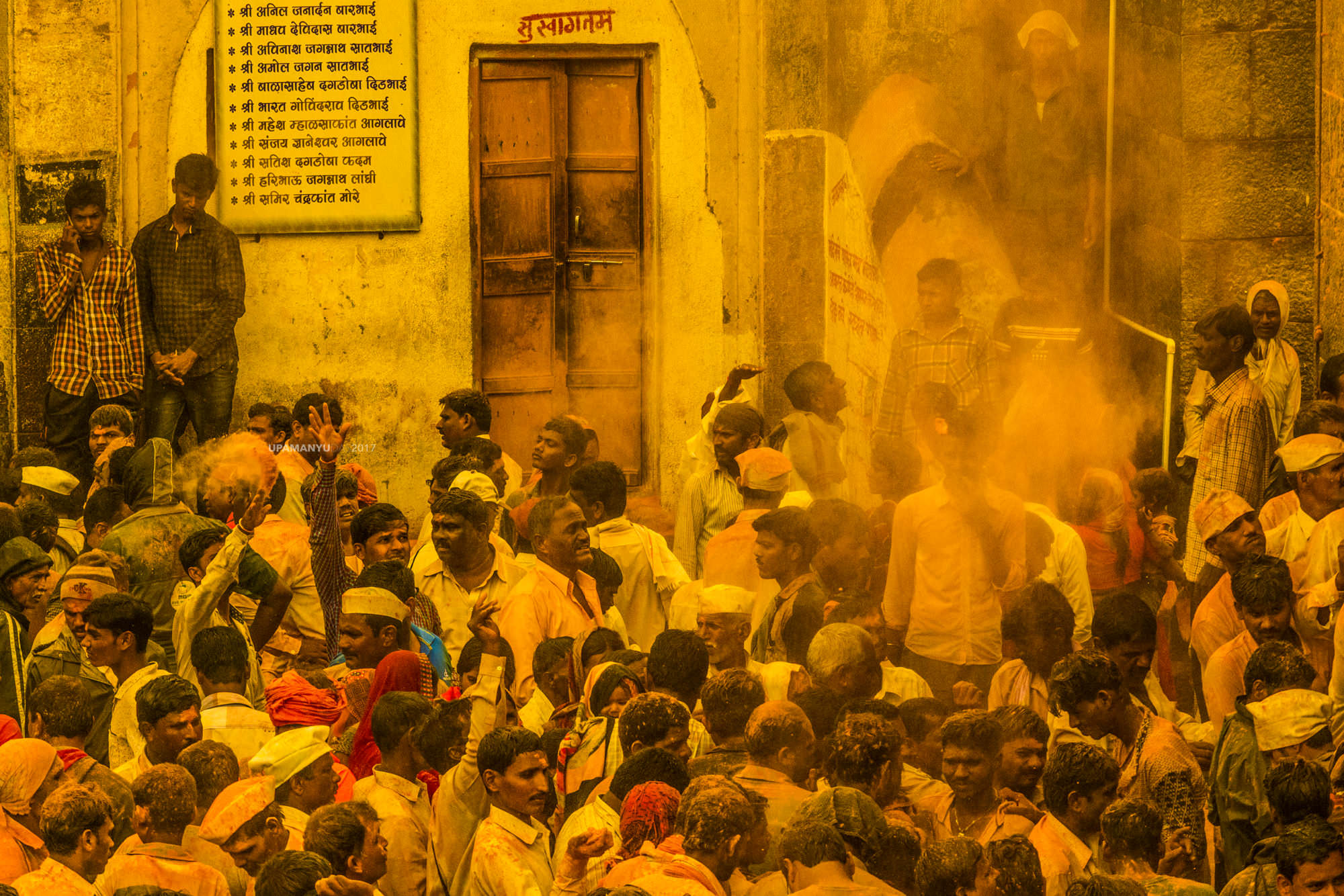
Some also believe it to be the offering respect for his being from the Surya - the symbol of power and brightness. Many paintings depict him riding a horse with a bowl full of turmeric powder in the hand may serve the reason of the amber golden celebration.
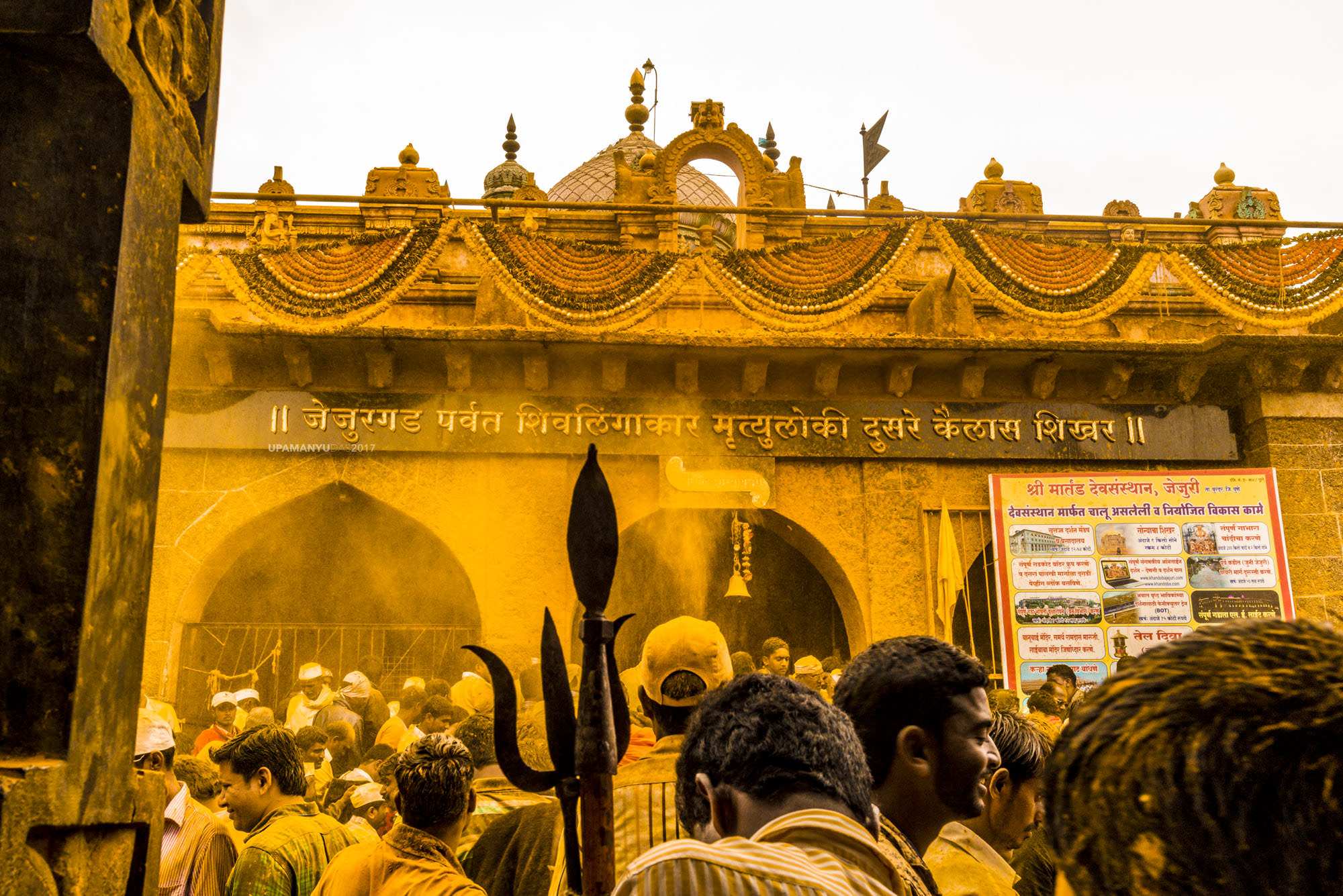
On the very auspicious day, a Palkhi(palanquin) is taken out from the main temple situated at the hilltop carrying the idols of Lord Khandoba and his wife Malsha for a holy bath in the river Karha. The procession climbs down the 200 steep stairs those connect the temple to the ground level along with the protective stone walls.
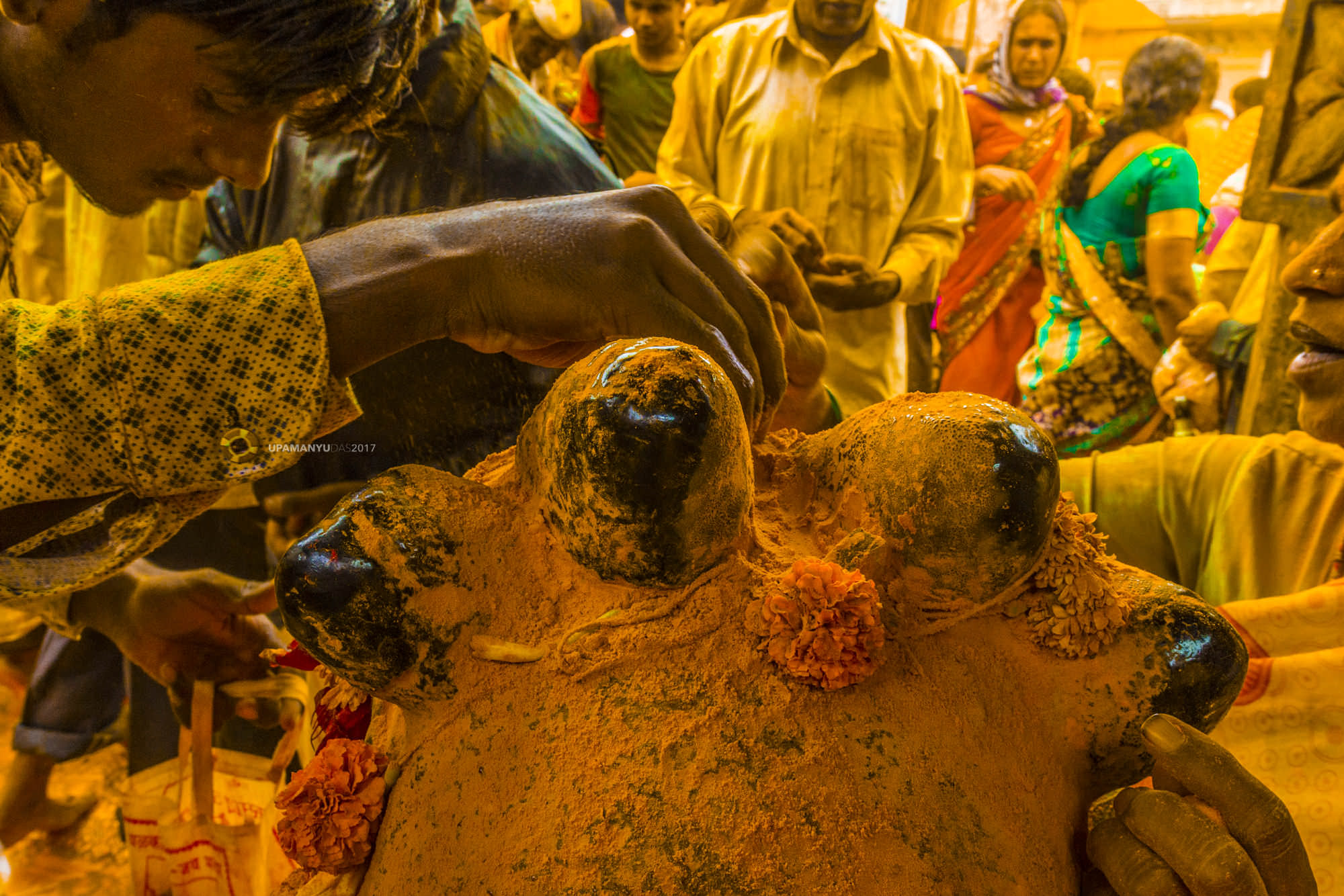
A veil of golden yellow turmeric powder engulfs the entire town in combination with the holy chants “Yelkot Yelkot Jai Malhar” “Sadanandache Yelkot” offered by his dedicated followers. The complete area starts reverberate with faith and devotion. The entire atmosphere gets soaked into the mood of a divine celebration with the purity of golden turmeric.
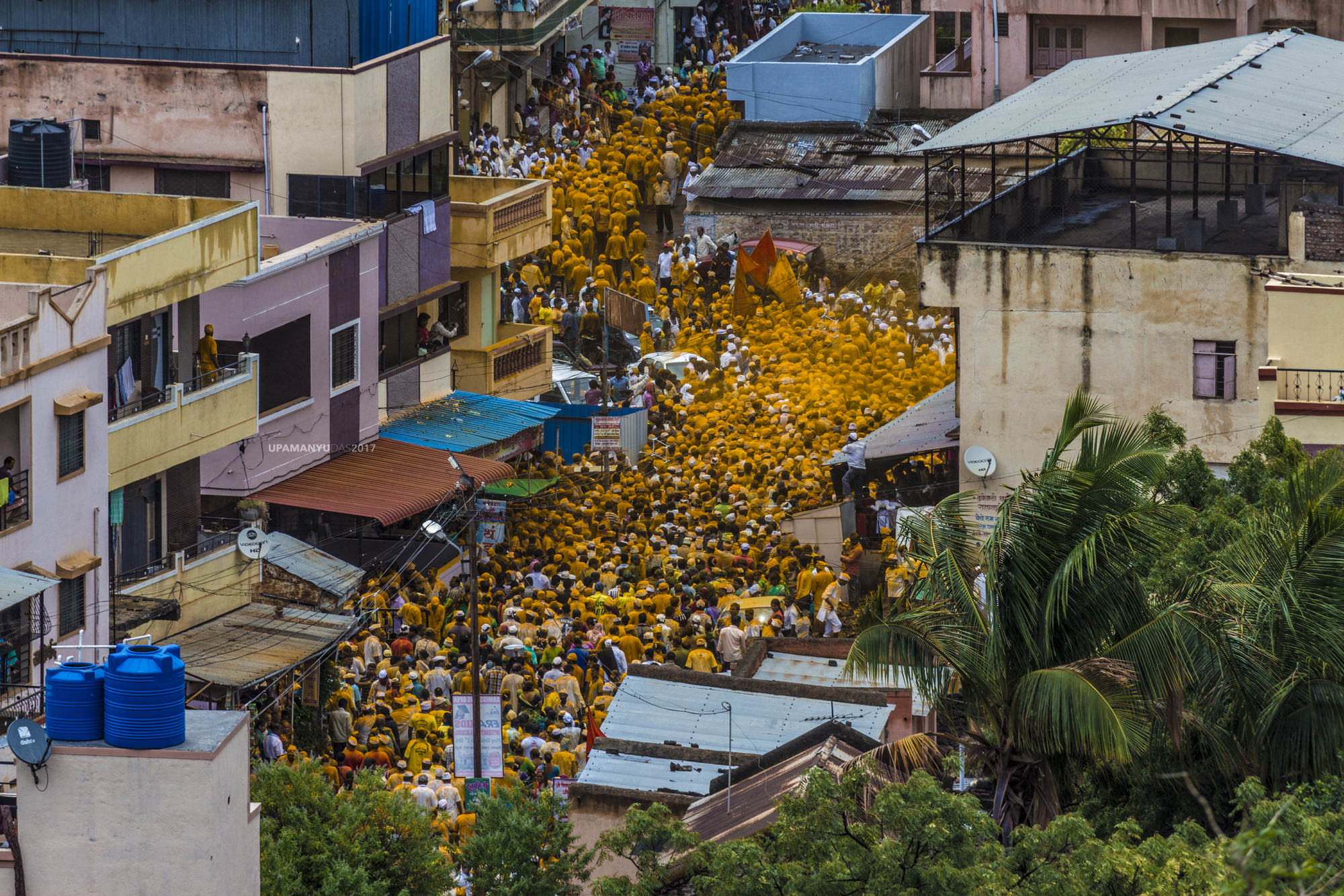
A golden yellow cloud prevails everywhere the procession goes through. With the holy dip, the ritual of the Khandoba marriage is recreated. At the end of the day, the idols are taken back to the shrine. A series of thousands of lamps get lightened on the spectacularly constructed Deepmalas (stone structure to place burning oil lamp on) to welcome the gods to their abode and brings up a divine atmosphere around the temple. Thus, Jejuri influences the heart of millions with its Golden touch.
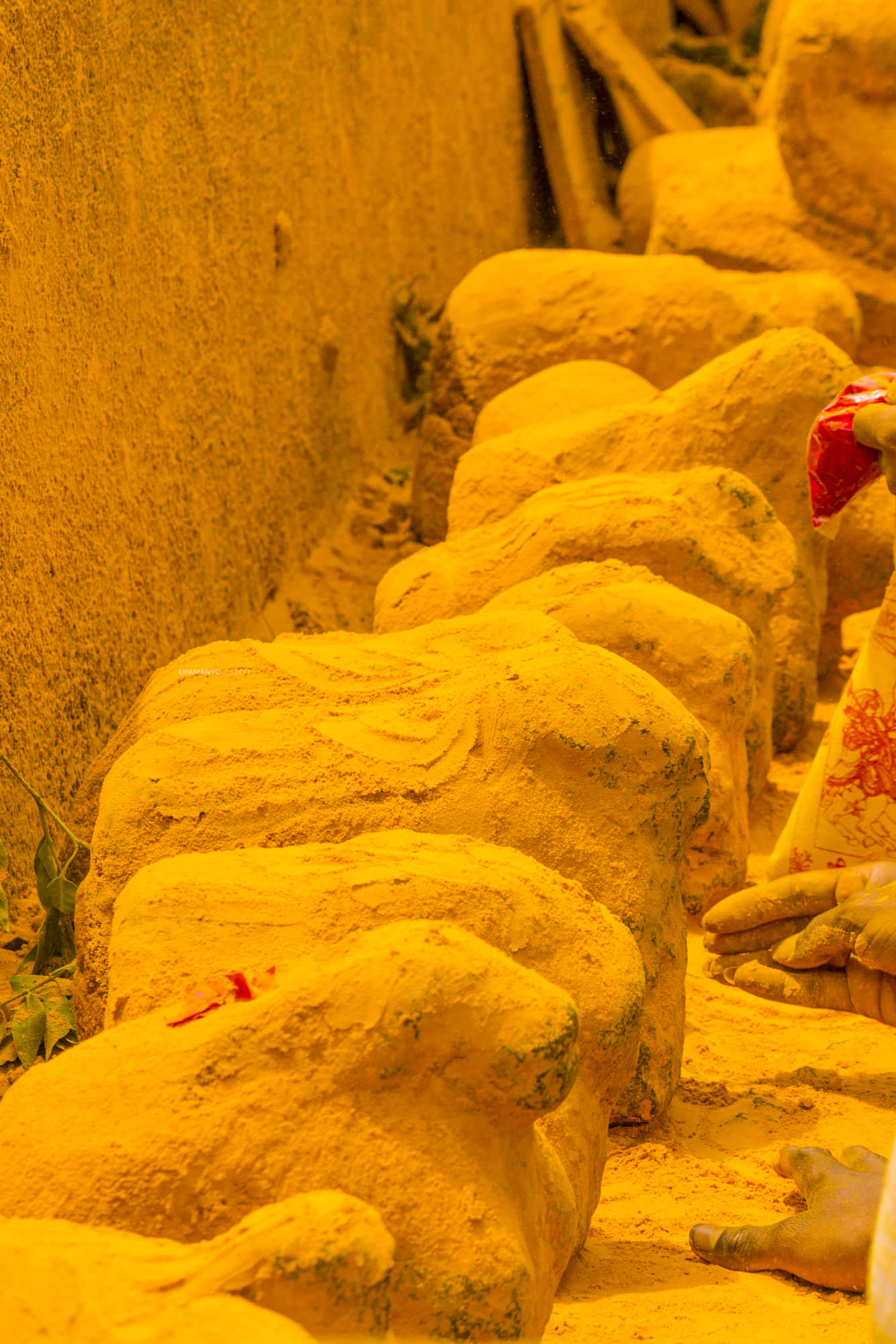
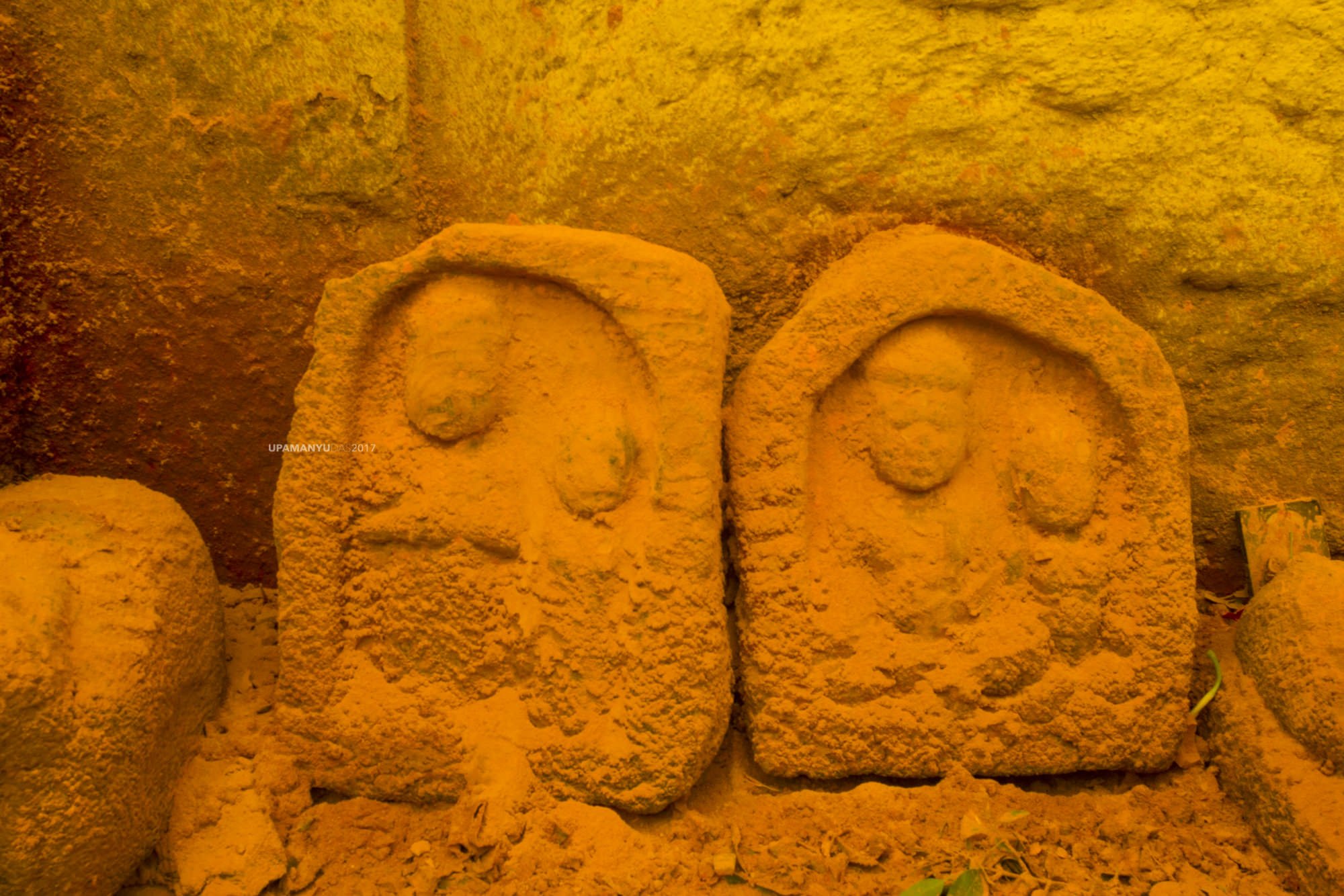
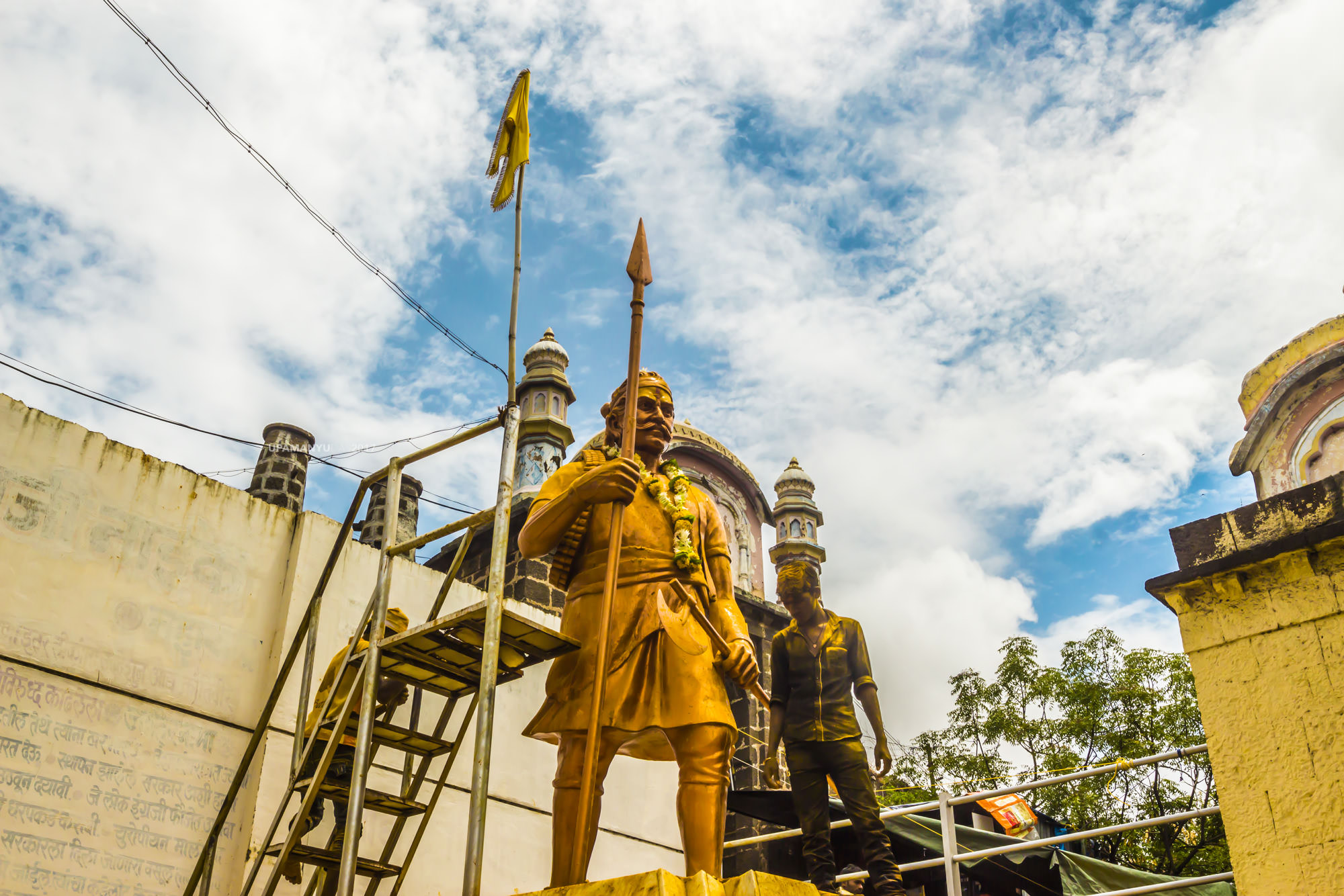
Before I knew, it was time for me to leave. Having experienced an unique tradition, my heart was content. Though a pang of sadness was in my heart, I was fortunate to have been part of this divine tradition.
This project would not have been successful without the help of Zeiss, who provided me with the lens and bore the costs for the tour.
Some of you might be wondering why I’m posting this travelougue amlost an year-and-half later the actual travel. After the passing away of my father in 2015 and my mother in 2016 just a few days after I made this trip, I was not in a state to sit with these photographs. With time these just got stacked in a corned of my digital drive. It is only now that I got the time to process the photographs and write this article.
The factual text in this writeup is courtesy of Arun Saha, whose article can be found here.
P.S If anyone as any more information regarding any of the rituals mentioned here, please comment or get in touch with me at upamanyu@upamanyu.in.
 Photography
Photography